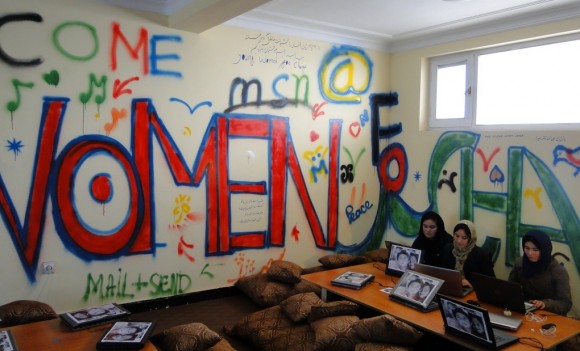This post reflects arguments made in a joint background paper published by the Internet Society and the Association for Progressive Communications (APC) ahead of the G20 Women’s Group (W20) Summit held in Argentina on 1-3 October.
In our digital age, internet literacy has become essential for, if not synonymous with, being employable in many fields. Information and communications technologies (ICTs) fuel business growth and countries’ economic development. They open new channels to communicate across great distances, as well as to organise people, raise awareness and spur activism.
But such promise can deepen existing inequalities offline if these technologies cannot be accessed and enjoyed by all.
Today, many women and girls are getting left behind in digital development. While in low- and middle-income countries, the gap between women’s use and that of men is 26%, in least developed countries (LDCs), women are 33% less likely than men to use the internet.
In some cases, women simply don’t have access to the internet, or it’s too expensive. In others, they have limited access with pre-paid services. There are also cultural factors that stop women from using the internet or even owning a computer or a mobile phone.
This points to deeper issues. Globally, women have less leisure time than men, given that they generally shoulder the greater burden of housework and childcare. They also have fewer opportunities than men in getting jobs or entering occupations where they can access the internet and learn computer skills. Many also report feeling that internet content is not relevant to their lives. Others fear online privacy invasions or abuse. As a result, we need more female content creators and safe online spaces.
Moreover, we must remember that internet access is only fully meaningful when women have the skills or capacities to use it to improve their lives, or those of their families and communities. As economies are becoming more digital and interconnected, women’s participation in fields like science, technology, engineering and mathematics (STEM) is crucial. But, unfortunately, it is not keeping pace.
We need effective, tangible and measurable action to close the digital gender gap in internet access. We need to address barriers to its use to ensure that women and girls can truly benefit from digital inclusion.
We know that digital disadvantage mirrors deeper structural, economic and cultural inequalities. So, policies can’t be solely digital in nature. Measures to bridge the digital divide must be grounded in human rights, including women’s rights to participate in and contribute to social, economic and cultural development. They must consider women’s freedom to make their own decisions and include women from all social groups and walks of life in shaping these policies, and technologies, that affect their lives.
There is no one-size-fits-all solution. There are huge national variations in both gender equality and digital development. Changes need to be culturally specific in order to be effective. If we wish to overcome digital disadvantage and promote digital development, governments, business and other stakeholders need to pay attention to these different contexts when developing policies, programmes and business plans.
Digital development measures must also be integrated with policies to combat gender inequality.
In August 2018, the G20 committed to “pay special attention” to the digital gender divide and made nine recommendations in this regard in the G20 Digital Economy Ministerial Declaration, adopted in Salta, Argentina.
Without such action, differences in internet access and use will increase, rather than reduce, the gap in both information and power between women and men. That would hurt us all.
Read “Women’s digital inclusion: Background paper for the G20” here.

